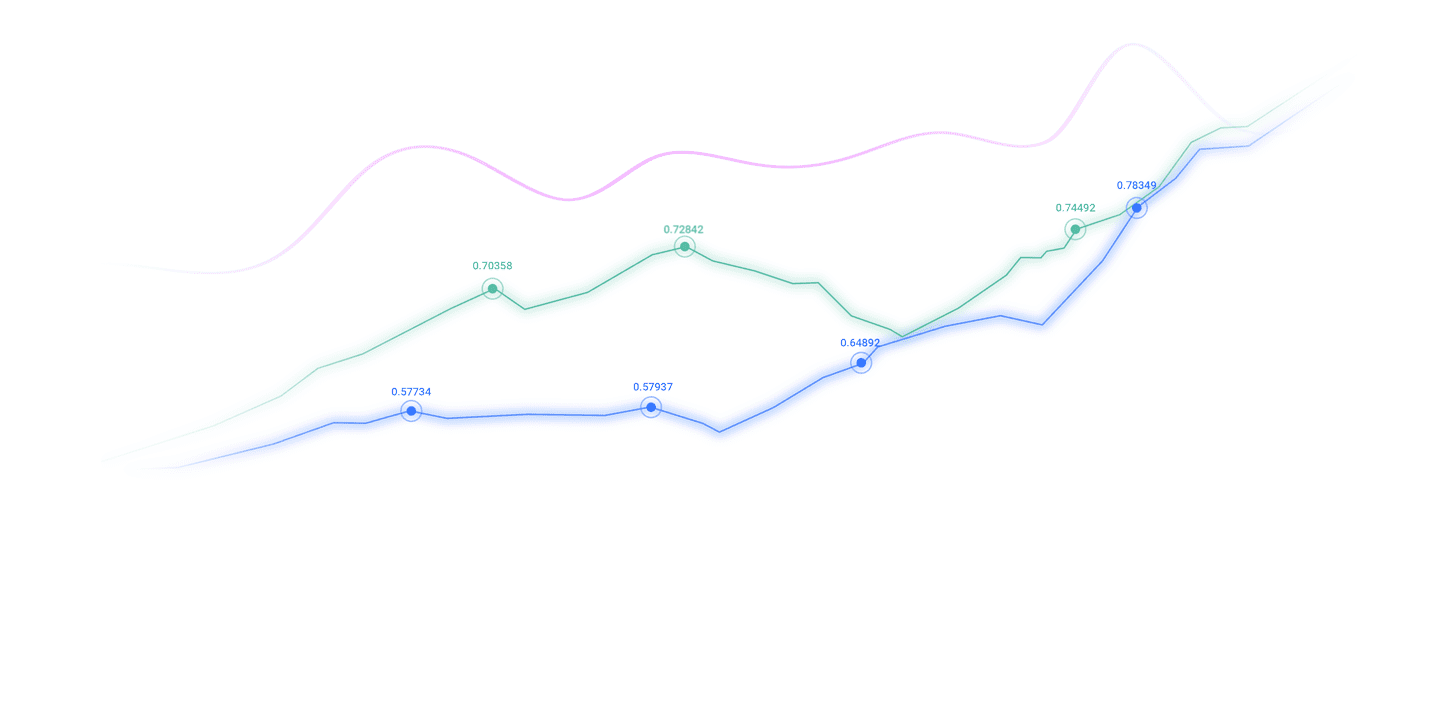Trusted by over 15 Million Traders
The Most Awarded Broker
for a Reason
CATEGORIES
News
- 【XM Market Analysis】--Weekly Forex Forecast – GBP/USD, EUR/USD, USD/JPY, AUD/USD
- 【XM Forex】--BTC/USD Forecast: Bitcoin Price Outlook – Bitcoin Continues to Bounc
- 【XM Group】--USD/JPY Forecast: United States Dollar Continues to See Support Agai
- 【XM Forex】--USD/TRY Forecast: Reports Reveal Lira's Significant Appreciation in
- 【XM Decision Analysis】--GBP/USD Analysis: Bearish Trend Future
market news
Safe-haven assets fail! Will the plummet of US bonds force the Fed to cut interest rates urgently?
Wonderful Introduction:
The moon has phases, people have joys and sorrows, whether life has changes, the year has four seasons, after the long night, you can see dawn, suffer pain, you can have happiness, endure the cold winter, you don’t need to lie down, and after all the cold plums, you can look forward to the New Year.
Hello everyone, today XM Foreign Exchange will bring you "[XM Foreign Exchange]: Safe-haven assets fail! Will the plummeting US bonds force the Federal Reserve to cut interest rates urgently?" Hope it will be helpful to you! The original content is as follows:
On Wednesday (April 9), the global bond market ushered in a new round of selling. The yield on the 10-year U.S. Treasury bonds broke through 4.20%, hitting a two-month high; the yield on the 30-year U.S. Treasury bonds soared to the highest level since 1998, and core euro zone bonds such as German bonds also followed the trend of U.S. bonds. At the same time, the US dollar index weakened, and although gold rebounded intraday, it still under pressure on the weekly line. There is a rare differentiation in the market's hedging logic - the sell-off of US bonds in traditional safe-haven assets coexisted with the stock market plunge, reflecting investors' deep anxiety about policy uncertainty and liquidity risks.
The core motivation of the US bond sell-off: from "safe-averse failure" to policy dilemma
The abnormal movement in the US bond market this time is not simply driven by interest rate expectations. Although the Trump administration's tariff remarks have aggravated concerns about the economic slowdown, U.S. Treasury yields have risen instead of falling, revealing three structural contradictions: 1. Liquidity runs and leverage closing positions
Recent market fluctuations have triggered a "selling and cashing" situation similar to March 2020. Forced closing of hedge fund basis trading (around $800 billion) has intensified selling pressure, with 10-year U.S. Treasury futures volatility range reaching 35 basis points, which is rare in 20 years. The demand for margin increases forces investors to reduce their holdings of U.S. bond positions with the best liquidity, forming a negative feedback loop of "fall-sell-liquidity exhaustion". A trader from a large bank revealed that some institutions even turned to sell profitable assets such as Japanese bonds to fill the losses of U.S. bonds.
2. Inflation expectations and policy anchoring fail
Federal Chairman Powell's recent hawkish statements have weakened the market's expectations for an emergency rate cut. Morgan Stanley and other institutions have revised their forecasts, believing that the Fed may hold its troops this yearDon't move. The expectation of tariffs pushing up import costs further strengthens inflation stickiness, and the 10-year break-even inflation rate has risen by 12 basis points recently. As the head of a hedge fund said: "When inflation may return to 4%, the safe-haven attributes of bonds will naturally collapse."
3. Geopolitical premium and US dollar credit loss
The US Treasury Department's operation to lower long-term yields has encountered market backlash. Foreign investors' continuous reduction in holdings of US debt is partly due to concerns about the "negative trend in the US governance structure" (Goldman Sachs said). The situation in Russia and Ukraine xm-links.combined with Trump's tariff remarks has accelerated the process of global central banks dispersing the allocation of US dollar assets. The narrowing of swap spread shows that medium- and long-term foreign investment selling is a key driving force for this round of US Treasury yields.
The Federal Reserve's Dilemma: Is the Rate Cut Window Closed?
The current market pricing reflects interest rate cut expectations have been reduced from 75 basis points at the beginning of the year to 25 basis points. However, two contradictions need to be noted:
Economic data differentiation: Despite the weak PMI in the manufacturing industry, the employment market is still resilient, and the core PCE is above 0.https://xm-links.com3%;
Financial conditions are tightening: the interest rate of 30-year mortgage loans has exceeded 6%, the interest rate spread widened to the highest level this year, and the rise in real interest rates has begun to curb economic activities.
If the US Treasury sell-off continues, the Federal Reserve may face the "triple-dollar paradox":
1. Maintain high interest rates to fight inflation → intensify the rolling pressure of debt (the US Treasury needs to refinance $2.4 trillion this year);
2. Intervention in the market to provide liquidity → amplify balance sheet risks;
3. Cut interest rates early → sacrifice inflation credibility and trigger the depreciation of the US dollar.
Market impact outlook: repricing of US dollar, gold and risky assets
U.S. dollar index: supported by the return of safe-haven funds in the short term, but may be under pressure due to the decline in attractiveness of US bonds and the "de-dollarization" trend in the medium and long term. We need to pay attention to whether the simultaneous upward trend of bond yields in the euro zone changes the interest rate spread pattern.
Gold: The rise in real interest rates suppresses gold prices, but if the liquidity crisis in the US bond market worsens, gold may reappear in a rapid rebound after a synchronized decline with risky assets in March 2020.
Federal policy path: Before the June interest rate meeting, if the 10-year yield exceeds 4.5%, it may force the Fed to intervene or restart QE "invisible" operations (such as expanding the scale of repurchase tools).
The current turmoil in the US bond market has surpassed the traditional economic cycle framework and has become a xm-links.comprehensive touchstone for policy credit, liquidity structure and geopolitical risks. Historical experience shows that when "help-haven assets" themselves become a source of risk, the market often needs to clear more vigorously to rebuild the balance. In the next month, investors should focus on the adjustment of the US Treasury bond issuance plan and the Federal Reserve's capitalChanges in the balance sheet and the flow of sovereign funds will determine whether the U.S. Treasury yield will peak in stages or start a new "bear steep" cycle.
The above content is all about "[XM Forex]: Safe-haven assets fail! Will the plummet of US bonds force the Fed to cut interest rates urgently?", which was carefully xm-links.compiled and edited by the editor of XM Forex. I hope it will be helpful to your transactions! Thanks for the support!
Only the strong know how to fight; the weak are not qualified to fail, but are born to be conquered. Step up to learn the next article!
Disclaimers: XM Group only provides execution services and access permissions for online trading platforms, and allows individuals to view and/or use the website or the content provided on the website, but has no intention of making any changes or extensions, nor will it change or extend its services and access permissions. All access and usage permissions will be subject to the following terms and conditions: (i) Terms and conditions; (ii) Risk warning; And (iii) a complete disclaimer. Please note that all information provided on the website is for general informational purposes only. In addition, the content of all XM online trading platforms does not constitute, and cannot be used for any unauthorized financial market trading invitations and/or invitations. Financial market transactions pose significant risks to your investment capital.
All materials published on online trading platforms are only intended for educational/informational purposes and do not include or should be considered for financial, investment tax, or trading related consulting and advice, or transaction price records, or any financial product or non invitation related trading offers or invitations.
All content provided by XM and third-party suppliers on this website, including opinions, news, research, analysis, prices, other information, and third-party website links, remains unchanged and is provided as general market commentary rather than investment advice. All materials published on online trading platforms are only for educational/informational purposes and do not include or should be considered as applicable to financial, investment tax, or trading related advice and recommendations, or transaction price records, or any financial product or non invitation related financial offers or invitations. Please ensure that you have read and fully understood the information on XM's non independent investment research tips and risk warnings. For more details, please click here


































































































